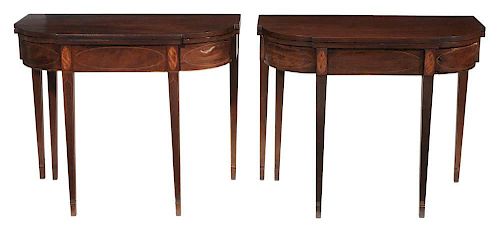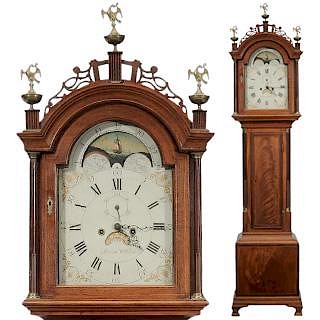Haywood Family Pair North Carolina
Lot 491
About Seller
Brunk Auctions
PO Box 2135
Asheville, NC 28802
United States
Based in Asheville, North Carolina, Brunk Auctions has been conducting sales of fine and decorative arts for over 30 years. Auctions are held in our North Carolina sale room but attracts a global audience. Founded by Robert Brunk in 1983, the auctions became well known for their integrity and profes...Read more
Categories
Estimate:
$15,000 - $25,000
Absentee vs Live bid
Two ways to bid:
- Leave a max absentee bid and the platform will bid on your behalf up to your maximum bid during the live auction.
- Bid live during the auction and your bids will be submitted real-time to the auctioneer.
Bid Increments
| Price | Bid Increment |
|---|---|
| $0 | $25 |
| $100 | $50 |
| $1,000 | $100 |
| $2,000 | $200 |
| $3,000 | $250 |
| $5,000 | $500 |
| $10,000 | $1,000 |
| $20,000 | $2,000 |
| $50,000 | $5,000 |
| $100,000 | $10,000 |
About Auction
By Brunk Auctions
May 16, 2015 - May 18, 2015
Set Reminder
2015-05-16 09:00:00
2015-05-18 09:00:00
America/New_York
Bidsquare
Bidsquare : Day 2: Fine Art & Decorative Works
https://www.bidsquare.com/auctions/brunk/day-2-fine-art-decorative-works-611
Brunk Auctions support@brunkauctions.com
Brunk Auctions support@brunkauctions.com
- Lot Description
Inlaid Federal Games Tables Wilmington, 1790-1810, each with mahogany fold over top with astragal corners over conforming skirt, with oval double lined inlays and figured light wood patera at leg tops with bookend inlay, line inlaid tapered square legs, yellow pine and oak secondary, well matched tops are cut from same boards, 29 x 35-1/2 x 18 in.; open 35-1/2 in. the first with extensive veneer cracks and buckling with some associated losses at curved skirts, one front legs lightly loose and with later brace at back, otherwise generally good condition with scattered minor inlay and veneer losses and repairs particularly at cuffs; the second table with both front legs replaced, now set with oval patera skirt facings from original legs, extensive veneer buckling and cracks, some associated losses at curved skirt, partial loss of one bookend inlay, scattered losses to veneers and inlay particularly at cuffs, crack at front edge of stationary top. Provenance: Descended from John Haywood (1755-1827), of Edgecombe County and Raleigh; by descent in the family. These tables are documented by MESDA, (see research file F-2704) and illustrated in John Bivins “Wilmington Furniture 1720 - 1860” catalogue no. 29. Bivins notes that “North Carolina card tables are rare, and the survival of a pair is exceptional; these tables were one of the furniture forms imported in great quantities, and Carolina cabinet makers no doubt found it difficult to produce them as cheaply as northern shops did.” John Haywood, North Carolina’s first Treasurer and Raleigh’s first Mayor, began construction of Haywood Hall, one of the largest buildings in town, in 1799 as a home for his family. Completed in the first few years of the 19th century, it is the oldest house within the original city limits of Raleigh still on its original foundation. The Marquis De Lafayette was Haywood’s guest in 1825. For more on Haywood Hall and the Haywood family see HaywoodHall.orgthe first with extensive veneer cracks and buckling with some associated losses at curved skirts, one front legs lightly loose and with later brace at back, otherwise generally good condition with scattered minor inlay and veneer losses and repairs particularly at cuffs; the second table with both front legs replaced, now set with oval patera skirt facings from original legs, extensive veneer buckling and cracks, some associated losses at curved skirt, partial loss of one bookend inlay, scattered losses to veneers and inlay particularly at cuffs, crack at front edge of stationary top
Condition
- Shipping Info
-
Brunk Auctions
117 Tunnel Road
Asheville, NC 28805
-
- Buyer's Premium



 EUR
EUR CAD
CAD AUD
AUD GBP
GBP MXN
MXN HKD
HKD CNY
CNY MYR
MYR SEK
SEK SGD
SGD CHF
CHF THB
THB
















